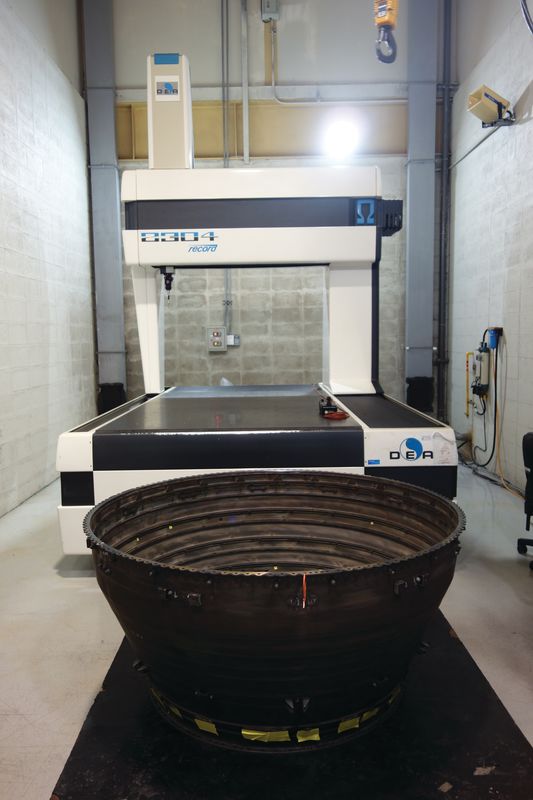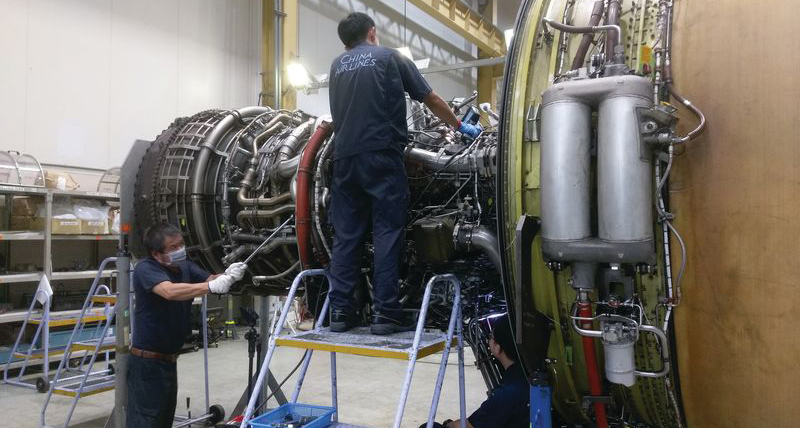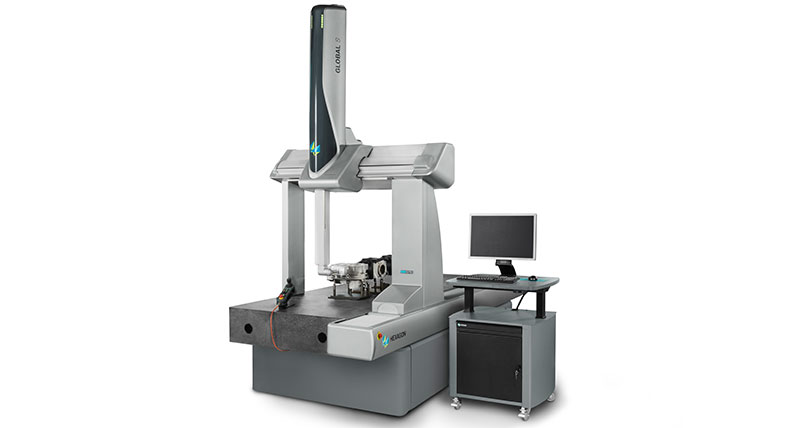Maintaining longevity of large bridge CMM
China Airlines - Taiwan
Contact us

Regular maintenance programme enables over two decades of precision with Hexagon Manufacturing Intelligence
Founded over 57 years ago, China Airlines is the main airline carrier in Taiwan, operating over 1 400 flights per week to 118 airports in 115 cities across Asia, Europe, North America and Oceania. With a fleet of 84 aircraft, regular engine repairs and maintenance programmes are crucial.
Medical checks for each engine
With over 2 000 employees located at two manufacturing hubs in Taipei and Kaohsiung, 80 engines are repaired and maintained each year between the two sites. The aeroengine is transported to the hub in Taipei located at Taoyuan Airport where it is carefully dismantled, which begins the process to establish if general maintenance or repair is needed.
The China Airlines team calls this process a ‘medical check’, subjecting the engine parts to rigorous examination, including x-rays and supersonic tests, to diagnose any problems and ensure parts are fit for their job and performing correctly. It’s then down to the team at China Airlines Taipei to find the solution and fix any issues within the maintenance, repair and overhaul (MRO) process.
Extensive engine checks and maintenance can be highly time-consuming, but the company reduced the time taken to complete these checks by enhancing the inspection process with a bridge-type coordinate measuring machine (CMM) and a planned maintenance programme.

A high quality CMM that’s built to last
Known for manufacturing high quality and reliable machines, Hexagon Manufacturing Intelligence established its presence in Taiwan by supplying CMMs for aerospace and car body manufacturers within the region.
This was the main reason why China Airlines chose Hexagon as its partner. In 1994, a DEA OMEGA was installed at the factory in Taipei and has remained the only CMM within the production site in Taiwan.
The DEA OMEGA CMM measures the majority of the airline’s engine parts, from turbine exhaust cases, compressor rear frames, to housings, with other aerospace parts sent from mainland China to the factory in Taiwan for repairs and measuring.
For China Airlines, accuracy, rather than speed, is the number one priority so installing the DEA OMEGA was the ideal choice. Yet the machine also helps optimise the process for quicker cycle times.
“The previous process was to measure different dimensions of the larger parts using different types of equipment”, explains Mr Chang Johnson, Operator. “With the DEA OMEGA we only have to use one machine which reads all of the dimensions, saving time and speeding up production by 50%.”
Environmental factors to consider
Due to the hot and humid climate in Taiwan, the DEA OMEGA is housed within a measuring room that is kept to a constant temperature of 22 °C. Earthquakes pose another challenge, as Taiwan is located in a seismically active zone on the Pacific Ring of Fire, and strict government regulations demand that all buildings in the region must be built to withstand a 7.0 magnitude earthquake. If there is an earthquake at the magnitude of 7.0 or below – which can affect the accuracy of a CMM – Hexagon performs a recalibration and restabilises the level of the machine as part of the maintenance programme. Due to the regularity of earthquakes in the region, level checks are part of the yearly maintenance.
Maintenance and enhancement ensures longevity of a CMM
Full Bright, Hexagon’s official distributor in Taiwan, has been providing a maintenance contract with China Airlines for over 20 years, servicing the machine every three months and performing an annual calibration. The team at the Hexagon Manufacturing Intelligence factory in Turin, Italy trained the Full Bright engineers, giving them the expertise to perform any necessary maintenance and train all China Airlines operators on how to use the CMM and the software.
“The training was very good, and if we have any problems we call the engineer who responds and fixes the issue quickly so we don’t have long periods of downtime,” comments Mr Chang Johnson.
The maintenance programme ensures the longevity of the CMM, which has been measuring parts of the jet engines for the last 23 years.
 The original software installed on the DEA OMEGA was Tutor for Windows, and after 22 years of using the software the decision was made to upgrade to a more modern platform, PC-DMIS. The upgrade to PC-DMIS was carried out in 2016 resulting in the DEA OMEGA being much faster.
The original software installed on the DEA OMEGA was Tutor for Windows, and after 22 years of using the software the decision was made to upgrade to a more modern platform, PC-DMIS. The upgrade to PC-DMIS was carried out in 2016 resulting in the DEA OMEGA being much faster.
“PC-DMIS is quick and easy to use,” explains Mr Chang Johnson. “Using the upgraded software has made the whole process faster, cutting the cycle time by around 20%. It’s also easier to program compared to Tutor for Windows, and the screen images are much clearer.”
Looking to the future
With a good maintenance programme in place, the DEA OMEGA has continued to perform high precision measurement for almost a quarter of a century. Still working with the original controller, jogbox and sensors, China Airlines has no immediate plans to upgrade to a new CMM. However, the company is planning to upgrade the controller due to it being an obsolete model.
“We would also like to upgrade the jogbox to a newer version,” says Mr Chang Johnson, “we have seen the results of how upgrading has improved the production of the machine and our MRO process.” Upgrading to the Next Jogbox (NJB) and controller would be the next step to maintaining the longevity of the CMM.
Based upon the success of the DEA OMEGA, the second site in Taiwan plans to install a GLOBAL CMM to ensure the process drives productivity and high quality standards.
